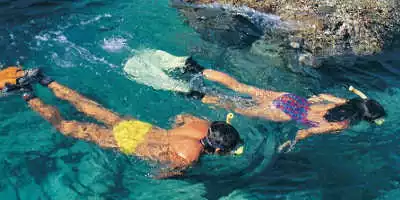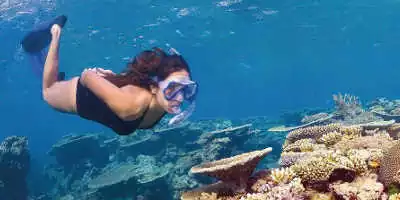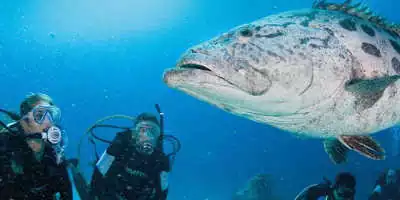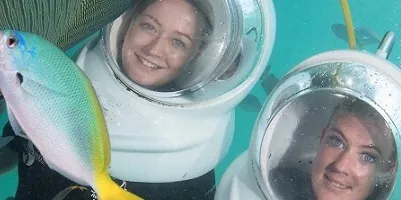
Is it better to dive or snorkel the Great Barrier Reef?
Written by: Cameron Ward
Published: 02/26/2021
Reading time: 3 mins
This is the main question folk ask once arriving at the fabulous Great Barrier Reef.
It is the Sofi’s choice of activity, with a number of contributing factors that can lead to one’s decision.
Snorkelling
Snorkelling is by far the most popular and easiest activity to do when exploring the Great Barrier Reef. Simply needing some goggles, flippers, and a breathing tube, and visitors can plunge into the warm waters and be amazed by the world lying below the surface. Folks can purely float along the surface or duck dive down a couple of metres to see the sheer beauty of the region. Those who aren’t the most confident swimmers can opt to use a floating device, making it easier to glide through the water with no issues.
Due to many of the reef spots being shallow enough for snorkellers, travellers can have their pick of attractions to choose from, from small secluded reefs to reef islands, to even off the beach.
Scuba Diving
To truly immerse yourself in the underwater world that is the Great Barrier Reef, scuba diving is the way to go! Snorkelling can be great for a quick look, but scuba diving can take out any of the frustrations you may face by simply snorkelling along the reefs, such as breathing, vision, and tiredness. When scuba diving, you simply drift through the water, with even non-swimmers finding it an easy way to travel about. The long flippers and breathing tank let you roam along the seafloor, coming face to face with tiny creatures and coral spots you may have missed if you simply duck dived down while snorkelling.
Scuba diving has a range of varieties to try, from short half an hour trips to hour-long adventures, to even night diving available. Letting you fully submerge yourself into this unforgettable region!
The Golden Rules of Snorkelling and Scuba Diving
By far the biggest rule when visiting the Great Barrier Reef is to look but don’t touch. The Corals of the region can look strong and sharp, but they can actually be incredibly fragile. Animals as well may come up close and personal to you but patting their bodies can cause harm. Another big rule is to leave the reef better than when you found it. Littering is a big issue at the reef, and even despite the beauty the region possesses, sometimes some floating rubbish can cloud your vision.
Some sunscreen, deodorant, and other chemicals you put on your body daily can cause serve damage to the sea’s ecosystem. Making sure to pop on safe sunscreen for both you and the ocean can help lower the harm the reef faces every day.
Related article: How much does it cost to visit the Great Barrier Reef?








